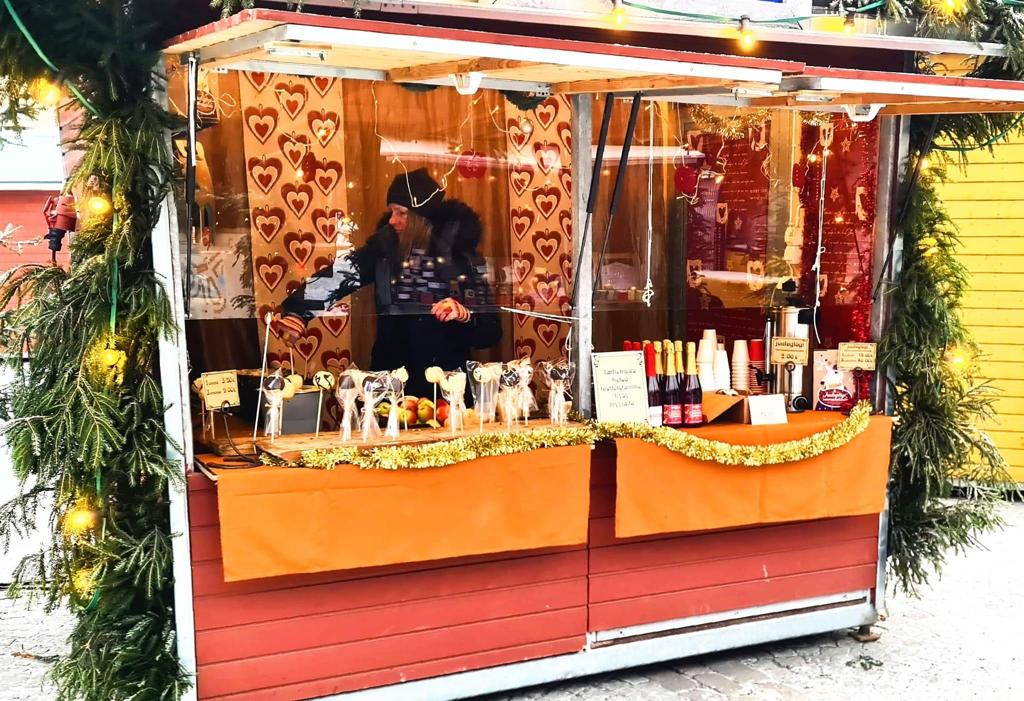
A sensory experience: the case study of the Christmas market.
Esseen tyyppi: Yksilöessee / 2 esseepistettä.
For the past few years, I have had the possibility of contributing to the Christmas cheer by working in one of the selling booths at the Tampere Christmas Market. Being known for its thoughtful details and the overall atmosphere that the event brings to the heart of the city, the Christmas Market in Tampere sees tens of thousands of visitors throughout the season, meaning that the potential for profit is high. How to sell at a market, competing with tens of other merchants at the same time?
One of the primary selling points of the Christmas market is the experience it offers. At the Christmas Market, consumers are primarily looking to take time off from their routines and enhance the feeling of Christmas and the upcoming holidays, meaning that the sellers are also selling the experience of the market. Different components creating the experience have been nurtured to near-perfection: there are elves and Santa Claus visiting the market and taking photos with the children, cheerful performances and Christmas songs playing from the speakers around the event area, fun wintery decorations for photo opportunities and cheerful merchants determined to provide an amazing experience. The visitors are guaranteed a near-euphoric feeling of the holidays approaching and this is prompted by key elements called sensory marketing.
At its core, sensory marketing refers to a strategy, where the customer is incentivized to connect with the brand or pay attention to tangible or intangible goods due to the appeal on the customer’s senses: sight, smell, taste, hearing or touch. Some great examples of this can be found near us – using one’s sense of sight and showing a popular colour combination such as orange and blue to Finnish people is often associated with the current best ice hockey team in Finland, Tappara, while the familiar jingle during the summer in a suburban Finnish neighbourhood may prompt the children to go outside immediately to visit the ice cream truck.
Olfaction (smell) is unique since the organ responsible for detecting the smell is in direct connection with the brain, meaning that smell may also influence our subconscious decision-making. In addition to this, new smells are immediately linked to people, events, moments or things, creating memories in your brain and thus being able to instantly remind you of a memory or a mood. For the same reason – its positive effects on influencing consumers to make the purchase – the sensory marketing has a separate branch in itself called the scent marketing.
In a research paper by Bertil Hultén in 2011, it is pointed out that “an experience is said to occur when a firm intentionally constructs one, in order to engage customers.” (Hultén, 2011).
During the Christmas market, our booth sold locally-made products from apples: spiced apple glögg, raw chocolate-covered apples, berry powders and non-alcoholic party drinks.
As an employee manning the booth, we consciously applied the theory of sensory marketing – and more specifically, scent marketing – into our selling. As an example, the marketing for the sight was apparent in the visuals that the booth provided – we decorated the booth from the inside with more Christmas decorations and added apples as a nod to our Christmas decoration traditions, which doubled as a symbol of what we offer in the booth that could be seen from afar. The scent marketing was the key element in the selling of the goods: when heating up the spiced glögg in the thermos, we would leave the lid partly opened so that the steam could escape and spread the smell of glögg and apples to the consumer pathways. In addition to this, the creation of chocolate apples meant dipping the apples into warm chocolate. By rolling the apples in the chocolate and finishing them, we accomplished the goal of creating ready-made apples in advance and also shared the smell of melted chocolate that turned the heads of the consumers.
The term sensory marketing is fascinating for its neuropsychological background and its effects on our subconscious decision-making. During the event, I made a point to also ask some of the visitors of their reasons why they came to the Christmas market. Over a half of them mentioned that they came for the experience, some even specifying that they enjoy the programme, the feeling they get while visiting the market, the availability of seasonal wintery goods and some purely since they’ve attended the market since their early years. How many have been affected by sensory marketing and are there people that haven’t been affected by it? Perhaps sensory marketing helps create the experience and in this case, the magic of the Christmas market.
Sources:
https://tampereenjoulutori.fi/
Hultén, B. (2011), “Sensory marketing: the multi‐sensory brand‐experience concept”, European Business Review, Vol. 23 No. 3, pp. 256-273. https://doi.org/10.1108/09555341111130245
Longley, R. September, 2019. “An Introduction to Sensory Marketing.” The Thought Co. https://www.thoughtco.com/sensory-marketing-4153908
https://askthescientists.com/senses/
Cover photo: Self-made photo of the booth at the Tampere Christmas Market.


